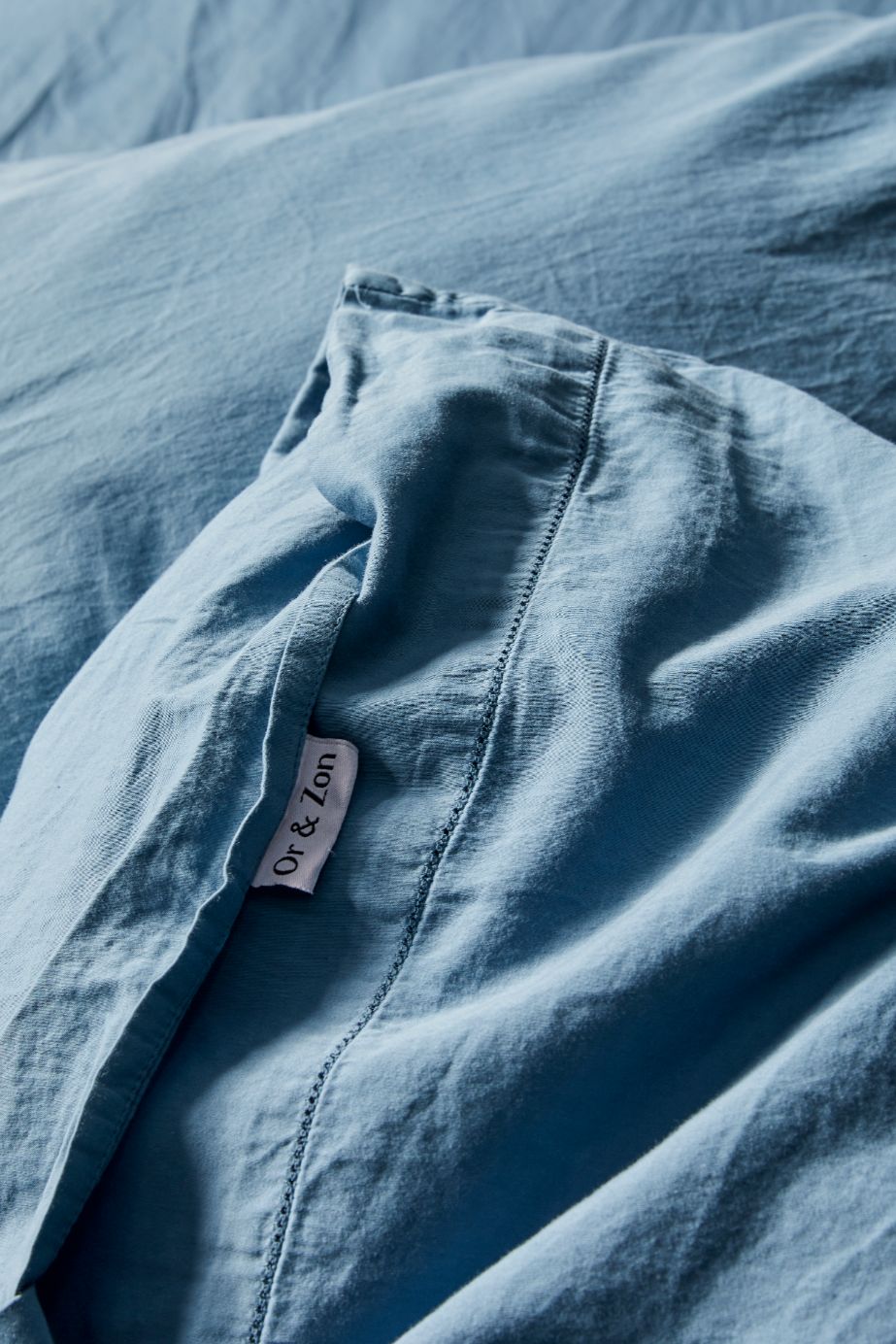365-DAY GUARANTEE | FREE SHIPPING | FREE RETURNS
365-DAY GUARANTEE | FREE SHIPPING | FREE RETURNS
365-DAY GUARANTEE | FREE SHIPPING | FREE RETURNS
Your sleep preferences are uniquely yours, which means there’s not just one correct answer when it comes to choosing the best fabric for sheets. Fortunately, we’re here to help you figure out what the best bedding materials are for you. We’ll guide you through what to look for when choosing the best bed sheet fabric, the benefits of various textiles, and other important things to consider when searching for the best material for sheets that will meet your needs.
Before we discuss the best bed sheet material, let’s go over some of the most popular options out there, and what makes each one unique. Keep in mind that some of these may not suit you perfectly, while others will be right in line with your unique preferences and needs. Here are some of the characteristics, benefits, and a few drawbacks of each type to help you get a better idea of which bed sheet materials are right for you.


Before we discuss the best bed sheet material, let’s go over some of the most popular options out there, and what makes each one unique. Keep in mind that some of these may not suit you perfectly, while others will be right in line with your unique preferences and needs. Here are some of the characteristics, benefits, and a few drawbacks of each type to help you get a better idea of which bed sheet materials are right for you.


What’s the best material for sheets? Determining the best fabric based on your sleep preferences makes restful snoozes so much easier to come by. Getting your eight hours is impossible if your sensitive skin is constantly irritated by rough sheets or if your bedding traps all your sweat. So, consider these qualities when asking, what is the best fabric for sheets:
Of course, it’s important to consider your health when you’re searching for the best fabric for sheets. Those with allergies, people who tend to get hot at night, and anyone with skin sensitivities should stick to options made of natural fabric and organic materials like 100% organic linen or cotton. Organic fabrics are devoid of dyes, toxins, and other harsh chemicals that can make allergies and skin issues worse. Linen, organic cotton, and real bamboo are all naturally hypoallergenic, so you won’t have to worry about suffering from any adverse and potentially dangerous reactions when you go to bed.
Breathable bed sheets are another important thing to consider. Heavier materials like flannel sheets and synthetic polyester sheets tend to trap body heat, making you feel hot and sweaty throughout the night. Choose cooling sheets made of moisture wicking materials such as linen so that the sheets trap moisture from the body and “wick” it away from your skin. These sheets will prevent your body heat from increasing, so you stay cool and comfortable while enjoying a higher level of sleep quality.
Here are some tips for what to avoid when you’re looking for the best material for bed sheets:

Organic cotton percale is a popular crowd-pleasing fabric for bed sheets. Its one-yarn-over, one-yarn-under weave creates a lightweight, airy fabric that lets you breathe. Meanwhile, those long-staple organic cotton fibers are incredibly soft and effortlessly durable. Skipping the harsh chemicals makes a huge difference in not just safety, but also texture and longevity!
Think of percale as the linen of cotton. It boasts that classic breezy sensation and laid-back crinkled look while being irresistibly soft right out of the package. Plus, organic varieties are easier on the environment — and more absorbent — than conventionally-grown crops.
Pair percale’s gentle texture and breathability with the cozy familiarity of cotton, and you have one of the universally best fabrics for bed sheets.
If luxury is the name of your game, organic cotton sateen is the best bedding material for you. This one-yarn-under, three-yarns-over weave creates a heavier fabric with a beautiful sheen. It’s almost silky — yet made from cotton and much easier to clean!
While sateen may be denser and more delicate than other weaves, it’s still much airier and more durable than other materials. And thanks to its unique thread pattern, organic cotton sateen is irresistibly smooth on your skin.
You never have to worry about appearance when it comes to cotton sateen. This wrinkle-resistant textile offers the best bedding material for indulgent folks without tons of extra time to spare. It always looks and feels perfect — and doesn’t require any special care.
Flax-based French linen is one of the best fabrics for sustainable bedding. It’s 100% biodegradable, has a minimal environmental impact, and requires little human intervention to thrive.
French flax linen bedding offers incredible breathability and can absorb up to 20% of its weight in moisture. Still, it dries fast, so sweaty sleepers can snooze soundly and keep cool all night. Its superior airflow means you’ll stay toasty on chilly nights too! It’s not magic — just natural thermoregulation.
Most linen sheets need some wearing in, but not Or & Zon’s. Our stone washing process removes any stiff or scratchy bits, so you can experience natural linen how it was meant to be enjoyed.
Ultimately, finding the best bedding material is all about your needs and personal preferences. Noticing the type of breathability, weight, texture, and sustainability you need to sleep soundly will help you identify the best fabric for bed sheets. Cotton percale is a crowd-pleaser, organic sateen has a heavier, luxurious feel, and French linen is as light and breathable as they come. Choose any of these from Or & Zon, and you’ll have sweet dreams — guaranteed!
